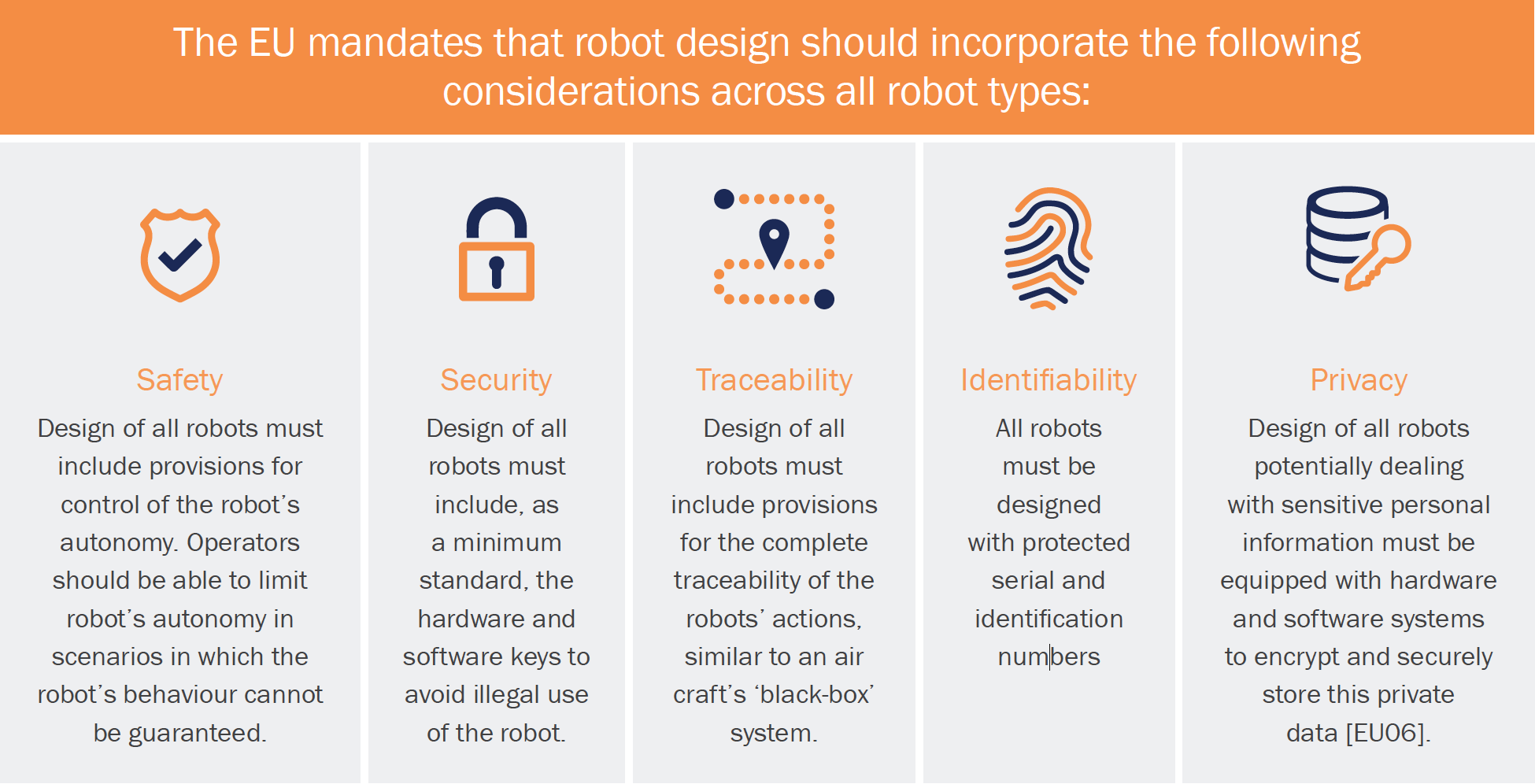
Design
A movement towards ethical design of technology has seen researchers and companies deploying frameworks for new technologies. This includes value sensitive design or ‘responsible innovation’ to help identify likely stakeholders and their values. One weakness of such frameworks is that they are often deployed on the assumption that a system will be built. The role of designers, policymakers and society should be to decide whether a system should be built at all, before being unleashed on important public infrastructure such as hospitals or courtrooms. Developers of new robotic technologies should apply these principles, which typically rely on focus groups or other techniques, to establish stakeholder views on a range of issues such as data privacy, which can then be incorporated into technology design.
Advances in autonomous robotics, and especially in the use of robotic vision systems, will make autonomous robotic systems increasingly available to non-specialist users. Although their autonomy is increasing, this does not mean an end to the need for human-robot interaction. For instance, autonomous agricultural robots will need to be maintained by farmers and instructed on which weeds to remove, which crops to harvest and which seeds to plant; autonomous scientific platforms will need human input on what types of data to gather, from where, and will need to make that data available in forms that human collaborators can make sense of. Robotic autonomy will bring a need for new kinds of interaction and new knowledge about how to design interactions so they make sense for a wide range of non-specialist users [JD17].
Non-specialist users present significant design challenges for any interactive technology, but particularly for autonomous robotics systems, which lack established conventions of use (see 3.3 Ethics). Previous research has uncovered some of the factors that contribute to intuitive use in existing product categories [BPM03], however, there is currently little known about what contributes to intuitive use of autonomous robotic systems. Social uptake of these new technologies will be strongly dependent on how people experience the use of the technology. The development of intuitive user interfaces will be key and can make these technologies accessible to more people and therefore have a greater positive impact on the world [JD17].

